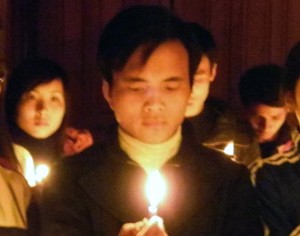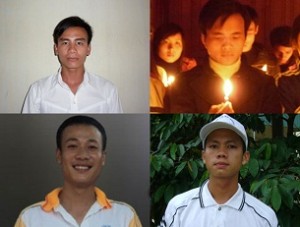By Michael Standaert, Bloomberg, January 19, 2017
Hydropower facilities along the upper reaches of the Lancang, which becomes the Mekong River as it flows out of China, have led to major river-flow changes affecting Thailand, Cambodia, Laos, Myanmar and Vietnam, according to a study from Finland’s Aalto University.
The study found river-flow changes affecting riverside communities’ ecology, livelihood and food security in those countries. It found that since 2011, hydropower facilities on the China part of the river have contributed to major increases in dry season flows and decreased flows during the wet season, when annual flooding helps ecosystems in the Mekong, a river basin system that sustains one of the world’s largest inland fisheries.
The biggest seasonal flow impacts came in 2014, after the construction of the Nuozhadu Dam. It is the largest hydropower facility in the Mekong River basin, with changes to flows detected up to 1,200 miles south in Cambodia.
“It is expected that the river-flow changes reported in our study will cause changes in aquatic and riparian habitats, which may result in reduction of ecological productivity,” lead researcher Timo Rasanen told Bloomberg BNA Jan. 17. “This may lead to changes in the lives of the people who live along the river and depend on the river and its resources.”
Further Research Urged
More research needs to be done to fully understand impacts on downstream communities, Rasanen said. Initial findings, however, showed large river-flow changes in northern Thailand and smaller but observable changes in Cambodia.
About 40 percent to 70 percent of animal protein that humans consume in Mekong countries comes from fish and other aquatic animals, Rasanen said.
“In the existing cases in the Mekong the communities living downstream from hydropower projects have reported significant declines in fish catches and rapid and large water level fluctuations that have resulted in loss of property and crops and even loss of lives,” Rasanen said. “Some communities have had to move to another location.”
China currently has seven hydropower facilities and another 20 planned for its section of the Mekong River basin. South of China, about 50 hydropower plants are operational and around 80 more are planned.
“The dams in China are just one part of the bigger picture,” Rasanen said, who added that the research focused on the China facilities because they are “the largest on the Mekong, they have become recently operational, they have potentially large downstream impacts, and there has been no public information on the operation of the dams and their downstream impacts.”
Downstream, other projects that could have large-scale impacts are going ahead as well, due to major increases in energy demand to power development and further livelihoods.
New Mekong Facility
Laos recently formally notified the Mekong River Commission that it plans to proceed with the Pak Beng Dam, which would be the third large hydropower facility constructed on the main stream of the Mekong River. Cambodia, Laos, Thailand and Vietnam formed the intergovernmental commission in 1995 to address shared river resources.
The Pak Beng Dam project would have “significant transboundary impacts on communities in Thailand and throughout the Mekong River Basin, compounding impacts from existing projects,” conservation group International Rivers said in a Jan. 16 statement.
Previous studies indicated the increasing multiplication of dams along the river “would greatly increase impacts on fisheries, sediment and hydrological flows,” said the group.
After widespread drought hit Mekong countries south of China in early 2016, China pledged to increase discharges from its facilities along the river after receiving requests from Vietnam. While China is not a full formal Mekong River Commission member, it has joined the Lancang-Mekong Cooperation Mechanism, formed in early 2016 that includes all of the countries sharing the river.
Transparency Needed
To fully understand impacts, countries must be more transparent in sharing information about discharges, as well as about operations of completed and projected projects.
“If the establishment of proper transboundary cooperation mechanisms fail and development occurs unilaterally, there is a risk for sharper divides between the winners and losers in the Mekong’s development, and the overall sustainability is likely to suffer,” said Rasanen.
Hydropower development benefits, such as increasing energy and water availability, and driving economic activity also cannot be ignored in the bigger picture, according to Rasanen.
“These are important aspects of societal development, and most likely it is what many people in the region want,” he said. The research is not aimed at undermining development but to highlight issues that “have been sidelined, neglected and can cause regrets in the future,” he said.
Height Insoles: Hi, I do believe this is an excellent site. I stumbledupon …
http://fishinglovers.net: Appreciate you sharing, great post.Thanks Again. Keep writi…
Achilles Pain causes: Every weekend i used to pay a quick visit this site, as i w…






January 20, 2017
China Hydropower Having Major Impact Along Mekong River: Study
by Nhan Quyen • [Human Rights]
By Michael Standaert, Bloomberg, January 19, 2017
Hydropower facilities along the upper reaches of the Lancang, which becomes the Mekong River as it flows out of China, have led to major river-flow changes affecting Thailand, Cambodia, Laos, Myanmar and Vietnam, according to a study from Finland’s Aalto University.
The study found river-flow changes affecting riverside communities’ ecology, livelihood and food security in those countries. It found that since 2011, hydropower facilities on the China part of the river have contributed to major increases in dry season flows and decreased flows during the wet season, when annual flooding helps ecosystems in the Mekong, a river basin system that sustains one of the world’s largest inland fisheries.
The biggest seasonal flow impacts came in 2014, after the construction of the Nuozhadu Dam. It is the largest hydropower facility in the Mekong River basin, with changes to flows detected up to 1,200 miles south in Cambodia.
“It is expected that the river-flow changes reported in our study will cause changes in aquatic and riparian habitats, which may result in reduction of ecological productivity,” lead researcher Timo Rasanen told Bloomberg BNA Jan. 17. “This may lead to changes in the lives of the people who live along the river and depend on the river and its resources.”
Further Research Urged
More research needs to be done to fully understand impacts on downstream communities, Rasanen said. Initial findings, however, showed large river-flow changes in northern Thailand and smaller but observable changes in Cambodia.
About 40 percent to 70 percent of animal protein that humans consume in Mekong countries comes from fish and other aquatic animals, Rasanen said.
“In the existing cases in the Mekong the communities living downstream from hydropower projects have reported significant declines in fish catches and rapid and large water level fluctuations that have resulted in loss of property and crops and even loss of lives,” Rasanen said. “Some communities have had to move to another location.”
China currently has seven hydropower facilities and another 20 planned for its section of the Mekong River basin. South of China, about 50 hydropower plants are operational and around 80 more are planned.
“The dams in China are just one part of the bigger picture,” Rasanen said, who added that the research focused on the China facilities because they are “the largest on the Mekong, they have become recently operational, they have potentially large downstream impacts, and there has been no public information on the operation of the dams and their downstream impacts.”
Downstream, other projects that could have large-scale impacts are going ahead as well, due to major increases in energy demand to power development and further livelihoods.
New Mekong Facility
Laos recently formally notified the Mekong River Commission that it plans to proceed with the Pak Beng Dam, which would be the third large hydropower facility constructed on the main stream of the Mekong River. Cambodia, Laos, Thailand and Vietnam formed the intergovernmental commission in 1995 to address shared river resources.
The Pak Beng Dam project would have “significant transboundary impacts on communities in Thailand and throughout the Mekong River Basin, compounding impacts from existing projects,” conservation group International Rivers said in a Jan. 16 statement.
Previous studies indicated the increasing multiplication of dams along the river “would greatly increase impacts on fisheries, sediment and hydrological flows,” said the group.
After widespread drought hit Mekong countries south of China in early 2016, China pledged to increase discharges from its facilities along the river after receiving requests from Vietnam. While China is not a full formal Mekong River Commission member, it has joined the Lancang-Mekong Cooperation Mechanism, formed in early 2016 that includes all of the countries sharing the river.
Transparency Needed
To fully understand impacts, countries must be more transparent in sharing information about discharges, as well as about operations of completed and projected projects.
“If the establishment of proper transboundary cooperation mechanisms fail and development occurs unilaterally, there is a risk for sharper divides between the winners and losers in the Mekong’s development, and the overall sustainability is likely to suffer,” said Rasanen.
Hydropower development benefits, such as increasing energy and water availability, and driving economic activity also cannot be ignored in the bigger picture, according to Rasanen.
“These are important aspects of societal development, and most likely it is what many people in the region want,” he said. The research is not aimed at undermining development but to highlight issues that “have been sidelined, neglected and can cause regrets in the future,” he said.